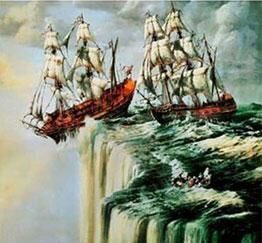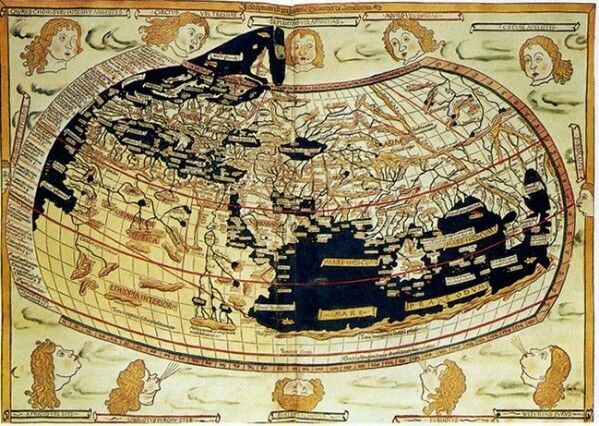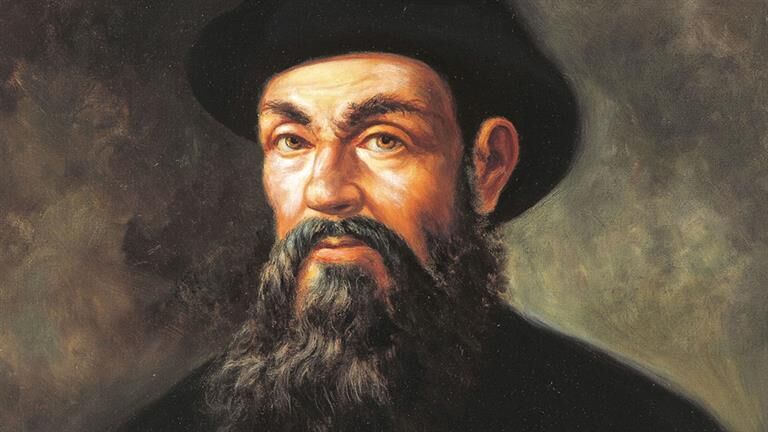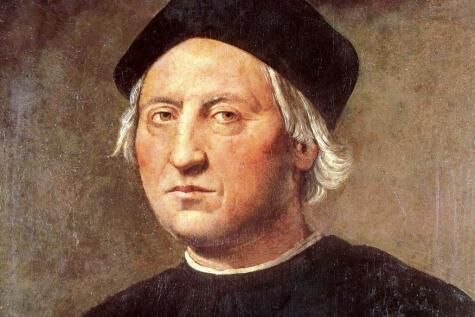Europeans in the late Middle Ages had a very limited cartographic conception of the world in which they lived. At the time, many people still believed that the Earth was flat. They explained the disappearance of ships by the fact that they had fallen into the void at the end of the Earth or by the existence of sea monsters that devoured their crews.
On the other hand, thanks to their travels, Europeans were well acquainted with the maritime routes of Europe, the Near East and North Africa. They were unaware of the existence of another continent, the one we now call America.

Depiction of a medieval fear

Map of the world drawn by Nicoloas Le Germain in 1482
There are many reasons why Europeans set out to explore new sea routes and new territories. These motivations fall into three main categories: economic, religious and political.
From the outset, colonial empires embarked on major explorations for economic reasons. The trade in precious metals, spices and silk enriched many European countries of the time. These products came from Asia, among other places. The many conflicts in North Africa and the capture of Constantinople by the Turks in 1453 prompted a number of countries to look for a way to continue trading. For this reason, the search for a new route to Asia became an important issue.
Europeans also had religious motivations. With the discovery of new territories, Europeans realised that the Christian religion was not widespread throughout the world. The religious authorities set themselves the task of evangelizing people who were not Christian.
Politically, the kingdoms of the time accumulated a great deal of power and prestige by holding a large number of territories around the world. The desire of the great European states to expand was therefore very real, and was a political motivation for the great explorations.
The great colonial empires and certain explorers joined forces to carry out these voyages. They often financed great navigators so that they could help them in their quest. Some of these great sailors became the real stars of the age.

Ferdinand Magellan, a famous explorer

Christopher Columbus, a famous explorer
|
Explorers |
Dates |
Exploration trips |
|
Christopher Columbus
|
1492
|
West Indies (Central and South America) |
Jean Cabot |
1497 | Newfoundland (Canada) |
Vasco de Gama |
1498 | India (by-passing Africa) |
| Amerigo Vespucci |
1499 | South America |
| Fernand de Magellan |
1519 |
Around the world |
| Jacques Cartier |
1534 | Province of Quebec |